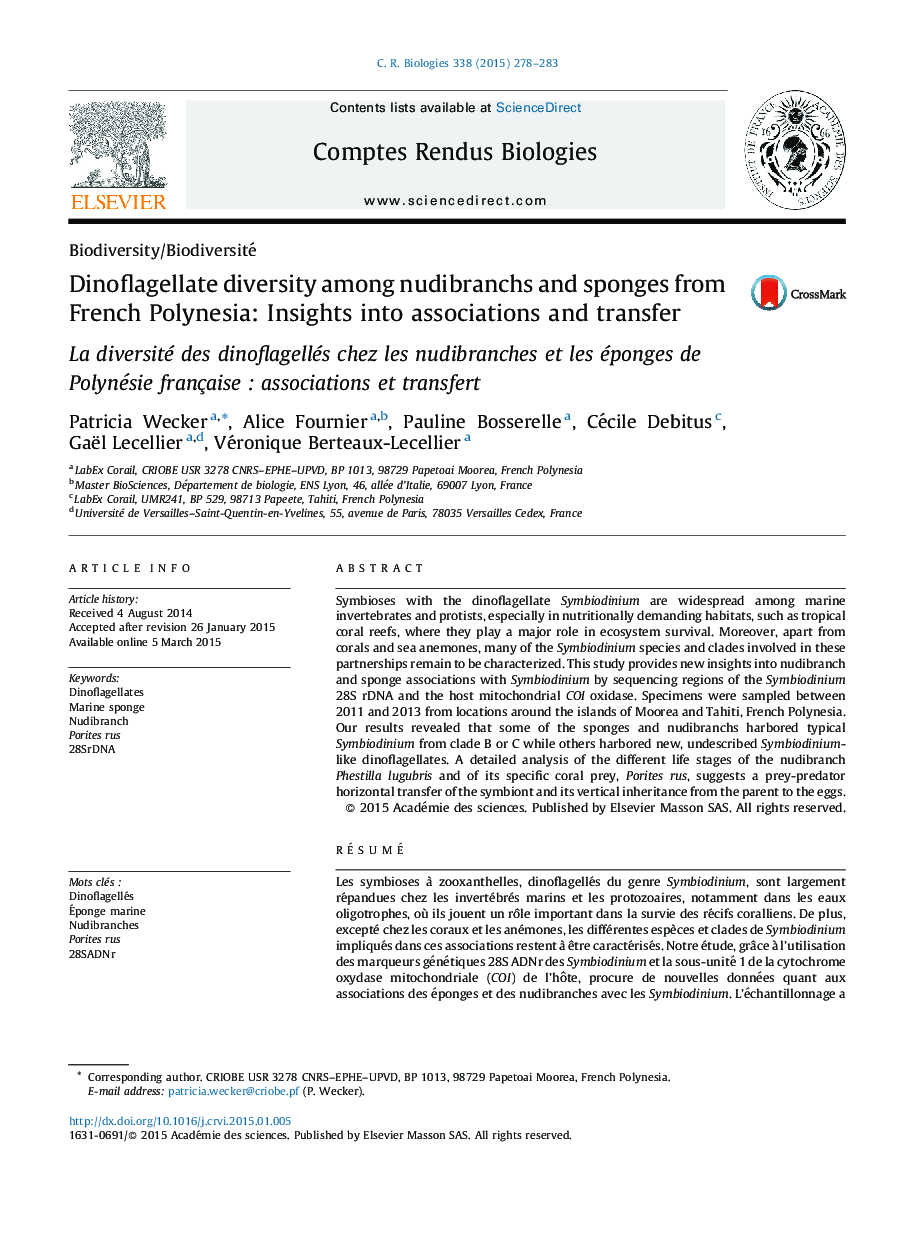| کد مقاله | کد نشریه | سال انتشار | مقاله انگلیسی | نسخه تمام متن |
|---|---|---|---|---|
| 2783305 | 1153734 | 2015 | 6 صفحه PDF | دانلود رایگان |
Symbioses with the dinoflagellate Symbiodinium are widespread among marine invertebrates and protists, especially in nutritionally demanding habitats, such as tropical coral reefs, where they play a major role in ecosystem survival. Moreover, apart from corals and sea anemones, many of the Symbiodinium species and clades involved in these partnerships remain to be characterized. This study provides new insights into nudibranch and sponge associations with Symbiodinium by sequencing regions of the Symbiodinium 28S rDNA and the host mitochondrial COI oxidase. Specimens were sampled between 2011 and 2013 from locations around the islands of Moorea and Tahiti, French Polynesia. Our results revealed that some of the sponges and nudibranchs harbored typical Symbiodinium from clade B or C while others harbored new, undescribed Symbiodinium-like dinoflagellates. A detailed analysis of the different life stages of the nudibranch Phestilla lugubris and of its specific coral prey, Porites rus, suggests a prey-predator horizontal transfer of the symbiont and its vertical inheritance from the parent to the eggs.
RésuméLes symbioses à zooxanthelles, dinoflagellés du genre Symbiodinium, sont largement répandues chez les invertébrés marins et les protozoaires, notamment dans les eaux oligotrophes, où ils jouent un rôle important dans la survie des récifs coralliens. De plus, excepté chez les coraux et les anémones, les différentes espèces et clades de Symbiodinium impliqués dans ces associations restent à être caractérisés. Notre étude, grâce à l’utilisation des marqueurs génétiques 28S ADNr des Symbiodinium et la sous-unité 1 de la cytochrome oxydase mitochondriale (COI) de l’hôte, procure de nouvelles données quant aux associations des éponges et des nudibranches avec les Symbiodinium. L’échantillonnage a eu lieu autour de Moorea et de Tahiti (Polynésie française), entre 2011 et 2013. Nos résultats révèlent que certaines espèces d’éponges et de nudibranches possèdent les clades B et C communément retrouvés, chez les coraux notamment, alors que d’autres présentent de nouveaux dinoflagellés « Symbiodinium-like ». Une analyses détaillée des Symbiodinium à différents stades du cycle de vie du nudibranche corallivore Phestilla lugubris et de son corail hôte Porites rus suggèrent l’existence d’un transfert horizontal de Symbiodinium proie–prédateur et un transfert vertical du parent P. lugubris à ses œufs.
Journal: Comptes Rendus Biologies - Volume 338, Issue 4, April 2015, Pages 278–283
